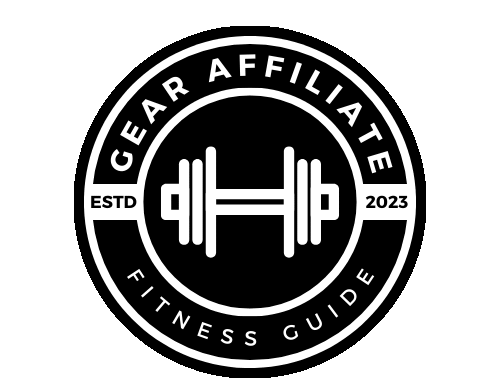
Table of Contents
Different Muscle Recovery Tools
Muscle recovery is a critical aspect of athletic performance and rehabilitation, instrumental in preventing injuries and enhancing overall physical productivity. Athletes and fitness enthusiasts often subject their bodies to rigorous training sessions, which can lead to muscle soreness, tightness, and fatigue. To mitigate these effects, various muscle recovery tools have emerged, with foam rollers and massage guns standing out as two of the most popular options in the fitness community.
Foam rollers are cylindrical tools made of foam that aid in self-myofascial release, aiming to alleviate muscle tightness and improve flexibility. By applying pressure to specific muscle groups, foam rollers help break down adhesions and improve blood circulation. This technique not only encourages muscle recovery but also enhances range of motion, which is crucial for optimal athletic performance. Professional athletes and fitness enthusiasts alike incorporate foam rolling into their routines, often utilizing it before and after workouts.
On the other hand, massage guns have gained significant popularity in recent years. These handheld devices utilize rapid percussive movements to penetrate deep into muscle tissue, delivering a targeted massage that helps relieve soreness and stiffness. Similar to foam rollers, massage guns can be used pre- and post-exercise; however, they offer the advantage of being able to reach areas that may be difficult to target with a foam roller. This versatility makes them appealing to a broader audience, including those recovering from injuries and individuals seeking to enhance their workout recovery strategies.
As we explore the intricacies of foam rollers vs. massage guns in this blog post, readers can anticipate a detailed comparison of their effectiveness, usage techniques, and suitability for various individuals. The insights provided will help clarify which recovery tool might be best suited to individual needs, whether for personal use or within professional settings.
Understanding Foam Rollers
Foam rollers have become a staple in fitness and rehabilitation settings, serving as an accessible tool for muscle recovery. Their development can be traced back to the early 1980s, initially utilized in physical therapy to assist patients in rehabilitation. Today, foam rollers are widely adopted by athletes and fitness enthusiasts for myofascial release, enhancing circulation, and alleviating muscle tension.
Foam rollers are cylindrical tools, typically made from foam or other materials, available in various sizes, shapes, and densities. The design is crucial, as firm rollers provide deeper tissue massage, while softer options are more suitable for beginners or sensitive areas. Common foam roller types include the smooth roller, grid roller, and textured roller, each offering varying intensities of pressure and muscle engagement during use.
Understanding how foam rollers work is essential to maximizing their benefits. By applying body weight onto the foam roller, pressure is generated against the muscles, helping to release tight knots and adhesions in the fascia—a connective tissue that surrounds muscles. This process encourages blood flow and nutrient delivery, promoting muscle recovery after workouts, enhancing flexibility, and decreasing soreness.
To effectively use foam rollers, one should adopt proper techniques to avoid injury. It is advisable to begin with gentle pressure, focusing on specific muscle groups for approximately 30 seconds to two minutes per area. Consistency is key; incorporating foam rolling into a regular routine can lead to significant improvements in muscle recovery and overall performance. However, it is essential to be aware of the potential drawbacks, such as overuse or inappropriate technique leading to exacerbated soreness or injury. Therefore, those new to this recovery method are encouraged to consult a professional for guidance.
if your would like to see our review on the brand that we recommend, click below.
Exploring Massage Guns
Massage guns, also known as percussion massagers, are handheld devices designed to aid muscle recovery through rapid tapping motions. They deliver targeted vibrations to specific muscle groups, promoting blood flow and reducing muscle soreness. This technology, known as percussion therapy, allows users to apply pressure to muscular tissues at varying intensity levels, making it a popular choice among athletes and fitness enthusiasts alike.
One key advantage of massage guns is their efficiency in delivering deep tissue massage without the need for external assistance. Traditional methods, such as foam rolling, can sometimes require more effort or positional adjustments to achieve the desired effect. Conversely, massage guns provide a consistent and customizable experience, allowing users to quickly address tight or sore muscles. By using a massage gun, individuals can conveniently target areas that need attention, enhancing recovery after workouts or easing stiffness from prolonged sitting.
There are various models of massage guns available on the market, each offering different features, attachments, and price points. The selection can often include options with adjustable speeds, battery life indicators, and ergonomic designs for extended use. Popular brands incorporate advanced technology in their devices, enhancing performance and user experience. Before purchasing, users should consider their specific needs, such as the intensity of muscle discomfort and the frequency of use, to determine which model suits them best.
To use a massage gun effectively, it is recommended to begin with a low-speed setting and gradually increase the intensity as comfort allows. Users should target each muscle group for about 30 seconds to one minute, moving the device slowly across the area to ensure comprehensive coverage. However, it is essential to exercise caution, avoiding any bone areas or applying excessive pressure that could lead to injury. Overall, massage guns can serve as a beneficial tool when used correctly, addressing muscle recovery and enhancing overall well-being.
If you would like to see the brand of massage guns that we recommend, click below.
Comparative Analysis and Recommendations
The landscape of recovery tools is predominantly shaped by foam rollers and massage guns, each offering unique advantages for muscle recovery. When making a choice between foam rollers vs. massage guns, it is essential to consider various factors such as effectiveness, ease of use, accessibility, and affordability.
Foam rollers are widely recognized for their ability to release muscle tightness and improve flexibility through self-myofascial release. They tend to be more accessible for users since they come in various densities and sizes at relatively low prices. Moreover, foam rollers can target specific muscle groups effectively, making them a staple in personal fitness regimes. They require minimal setup and can be utilized virtually anywhere, lending themselves well to casual athletes and individuals embracing a home workout environment.
In contrast, massage guns have gained popularity for their convenience and ability to deliver concentrated percussive therapy. This method can penetrate deeper muscle layers, which may provide quicker relief for some individuals, especially after intense workouts. However, massage guns typically come with a higher price tag and may require a learning curve for optimal use. The range of attachments and settings offers customization, allowing users to specifically target various muscle groups effectively.
When evaluating user experience, foam rollers might be better suited for those who prefer a slower recovery process, as they encourage users to focus on their technique. Conversely, fitness enthusiasts seeking quick muscle recovery may find that massage guns align better with their goals. Depending on recovery needs, a combination of both tools could even yield optimal results.
In conclusion, the decision between foam rollers vs. massage guns should be tailored to individual preferences and recovery objectives. Casual athletes might benefit more from foam rollers due to their affordability and ease of use, while serious fitness enthusiasts may lean towards the efficiency of massage guns for deeper muscle recovery.
If you found this post to be helpful, then you may be interested in the rest of our blog page here.
At Gear Affiliate, we always want to give our readers more resources to research. Below are a few sources that we have found to be helpful relating to this topic.


